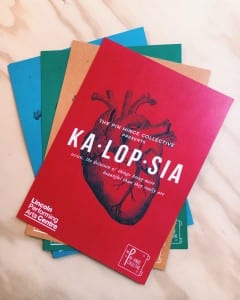Reflecting on our show, I believe it is important to consider the audience we received, feedback we collated, and how this data could have differed through different marketing techniques based on ACE policy.
Arts Council England divide the Audience Spectrum into 10 distinct groups:
Metroculturals, Commuterland culture buffs, Experience seekers, Dormitory dependables, Trips and treats, Home and heritage, Up our street, Facebook families, Kaleidoscope creativity, and Heydays.
Based on my knowledge of the LPAC’s usual audience (mainly College of Arts students and younger to middle aged people), I predicted that our main audience segment would fall under both:
Meteroculturals – “Prosperous, liberal, urbanites interested in a very wide cultural spectrum” (Arts Council England, 2017).
and
Experience seekers – “Highly active diverse, social and ambitious, engaging with arts on a regular basis” (Arts Council England, 2017).
These groups are both what ACE call “highly engaged” (Arts Council England, 2017) with the arts. Therefore, much of our marketing was focused on social media, particularly Facebook which these audiences use on a regular basis. The promotion of our material across Facebook was targeted to people between the ages of 18 and 40. However, what I noticed from seeing our audience on the day and the feedback we received on social media was that a large proportion of our audience were older than this, and mainly fell under the Trips and Treats segment. These are people who “Enjoy mainstream arts and popular culture influenced by children, family and friends” (Arts Council England, 2017). This is because our cast invited their families and family friends to celebrate the occasion.
Learning from this, I would have perhaps approached marketing our show slightly differently and spent more time distributing flyers and posters in town and making conversation to members of the public who fell under this category, rather than targeting younger people and students on campus and in trendy coffee shops. The feedback we received from our older audience was wonderful and showed us that our show is suitable for people of all ages, not just the young.
Works Cited:
Arts Council England (2017) Culture-based segmentation. [online] Available from http://www.artscouncil.org.uk/participating-and-attending/culture-based-segmentation [Accessed 27 May 2017].
